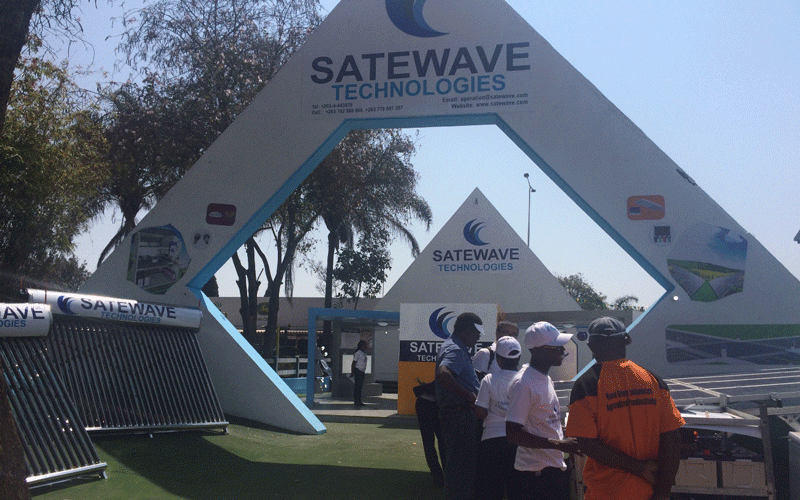
Andrew Muzamhindo HAVING spent the past few days in a 2011 Mazda CX-7, it is fascinating to see how cars have evolved. Evolution has been fast and furious in the past five years.
From the days of analog boring dashboards to digital ones and then now we have voice activated dashboards. The Mazda CX-7 falls somewhere in between the monologue and digital era. Nonetheless good vintage cars are in demand depending with the make and model. They have analog dashboards.
Mazda launched the CX-7 in 2007 as a new crossover utility vehicle to compete against the Toyota RAV4 and Honda CR-V. Crossovers continue to be the hottest segment in the auto industry.
They combine a high seating position and cargo capacity of a truck-based utility vehicle with the agility, smoothness and fuel economy of a car, and they do not have the image of a minivan or station wagon.
CX-7 is sporty, roomy, comfortable, and is a five-passenger vehicle that will haul a large amount of cargo. It comes with a turbocharged four-cylinder engine with a six-speed automatic transmission.
It is fun to drive and has responsive handling in mountain driving situations (inokwira mugomo as we say kumusha kwedu referring to the famous Ruwombwe mountain that shields our rural village) and is stable at high-speeds on the highway.
Some SUVs look like a confusion of swells and maladroit lines, half bath-tub and half rhinoceros. They are just awful but not Mazda’s CX-7. It is smart, swoopy and alive with personality; this is an SUV you can admire for its style.
To the point, I admired it for the experience it offers at the wheel. City or countryside — it still is a decent drive. When you are buying a family car presumably for a bit of adventure, one that you can take off the beaten track with the kids and their assorted detritus in tow, having ample space inside would seem to be a minimum requirement.
- Chamisa under fire over US$120K donation
- Mavhunga puts DeMbare into Chibuku quarterfinals
- Pension funds bet on Cabora Bassa oilfields
- Councils defy govt fire tender directive
Keep Reading
No fears with the CX-7 here: getting a family-sized load comfortably belted, stowed and battened-down inside those fashionable lines is easily achieved.
There are tonnes of room up front in that sweeping glass-house and good head, leg and shoulder space for three juniors seated in the back. Lift the rear tail-gate and there is also surprising space under the CX-7’s edgy chopped roofline. It will, as I found, easily carry the family’s holiday clobber for the weekend at the farm.
So, for that most basic of requirements for a mid-sized SUV — its ability to swallow a family — the CX-7 comes up trumps. More to the point, it does so without looking like a shoe-box and with more than a dollop of sporting style.
If you are in driver’s seat, you are not left feeling like you have buried your soul under the tedium of family responsibility.
The wide two-tiered dash is very appealing, the style of the centre console that sweeps up and into the dash is crisply modern and well laid out, and fit and finish is typically Mazda.
On the down-side of things, the shift gate looks insipid. This is quickly forgotten when you point the CX-7 out of the city and onto the highway.
It is out here, with the white lines flashing under the wheels and the rushing blur of the trees ticking off the kilometres that the real character and the elusive strengths of the CX-7 emerge.
On nearly any surface it is as hard to fault as it is to wrong-foot. For the way it tracks the contours of the road without harshness and jarring, for its short but elastic initial compliance, for its balance and the way it communicates at the wheel, its underpinnings are little short of superb.
While it is quick enough if you are prepared to keep the revs right up, it is underpowered compared to competition. You notice this in two key parts of the driving experience: the first, when overtaking and you find you have the pedal mashed to the floor before things start to happen; the second, when filling up at the petrol pump.
Putting a smallish turbo-driven petrol donk to work moving the CX-7’s 1 798 kilogrammes gives it a fearsome thirst. It is engineered for economy with very tall gearing (at 100km/h it is ticking over at barely 1850rpm) and Mazda claims 11.5 l/100km (as compared to the diesels’ 7.6 l/100km); but put a load in the back and it feels every extra kilogramme.
At the end of the day, the CX-7 Luxury Sports is a great car with the wrong engine. So, despite my misgivings about the petrol turbo engine, Mazda’s CX-7 is one of the best built, most appealingly styled, one of the best drives and buys in the segment.
The Mazda CX-7 remains a good compromise vehicle for small families — especially if you want a driving experience that is closer to that of a sport sedan and cannot be seen in a minivan.
Likes
- Sporty feel, handling and sophisticated underpinnings of much more expensive contenders.
- Solidly built
- Attention to detail paid when designing.
- Spacious, versatile and has benefits of an SUV tucked into very appealing sleek ‘arrow-head’ lines.
Stylish design
- Nice interior details
- Steering and handling
- Reasonably fuel-efficient
Dislikes
- Below-average interior utility
- Turbo engine is thirsty and its power delivery is not as smooth as that of its V6 rivals.
- Known issues with the VVT actuator and the motor runs hot. Both contribute to turbocharger issues and can cause complete engine failure.
- Tight backseat and disappointing cargo space with seats up
- Bluetooth not available on base model
Specifications
- Fuel Consumption: 7.6 litres/100kms
- Engine 2,5 l I-4
- Power:121 kW @ 6,000 rpm
- Torque : 218Nm @ 3,500 rpm
- Fuel type: Petrol
- Transmission 5-speed automatic
- Engine :2.5L L4 DOHC 16-valve
- [email protected].











